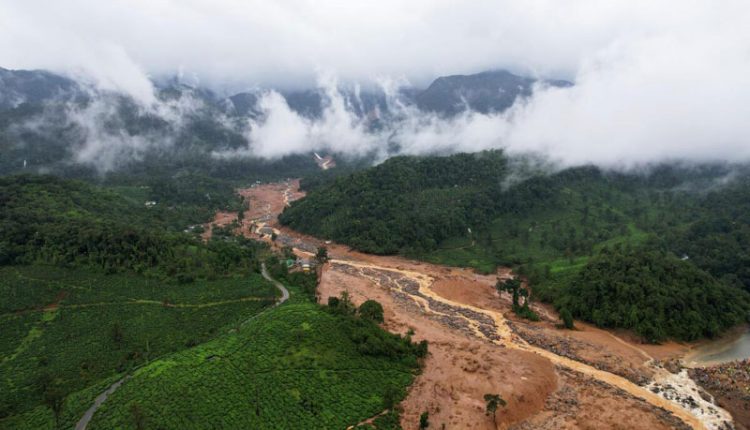Bibhuti Pati
Wayanad, situated in the state of Kerala, is renowned for its breathtaking coffee, cardamom, and tea plantations. These verdant landscapes not only enhance the region’s beauty but also fill the atmosphere with a pleasing fragrance. Located at the southern edge of the Deccan plateau, Wayanad is surrounded by dense forests that are part of UNESCO’s World Network of Biosphere Reserves. Its advantageous position links it to Bandipur in Karnataka and Mudumalai in Tamil Nadu, forming an extensive natural corridor for wildlife.
For visitors, Wayanad presents a variety of scenic picnic locations alongside mountain streams, tranquil lakes, and cascading waterfalls. Adventure seekers can partake in activities such as mountain biking, camping, trekking, speed boating, zorbing, and ziplining. Wildlife enthusiasts have the chance to embark on safaris, navigate forest trails, or stay in treehouses. The region is also significant for the Edakkal Caves, which contain some of the earliest evidence of human habitation.
The areas of Punchirimattam and Mundakkai, which were the first to experience the impact of the landslide, are currently deemed unsafe. Conversely, most regions of Chooralmala—one of the villages most severely affected—remain safe for residents. Regarding the destruction caused by the landslides, experts noted that the debris from the initial landslide created a dam-like formation near Mundakkai. This structure eventually collapsed as the volume of water and debris increased, resulting in a substantial flow that caused widespread damage. The debris, which included uprooted trees and large boulders, traveled eight kilometers downstream.
There is no doubt that the changing dynamics of the climate are causing significant issues globally, particularly in hilly regions. While landslides are a natural phenomenon, their frequency has notably increased in recent years, primarily due to human activities. The construction of homes and encroachment into forested areas, along with drastic changes in land use patterns, have exacerbated these problems, especially in Kerala, where the steep slopes of the Western Ghats have contributed to the challenges faced. It is crucial to consider the type of development we pursue.
In the early 1990s, Justice Guma Pal, in his judgment regarding the Tirupat Tank case, emphasized that development should not come at the expense of the environment. The climate systems have been severely compromised, and little has been done to restore them. The destruction of forests, which previously stabilized the soil, has been detrimental. Numerous court orders and expert recommendations were disregarded by the then UPA government, and the KasturiRangarajan report was significantly weakened.
The Supreme Court has also highlighted the precautionary principle, reminding us that we are merely custodians of the environment and cannot artificially create a sustainable ecosystem in a short time frame; it requires extensive periods for the environment to recover. Unfortunately, financial interests often lead to deforestation without adequate care for the consequences. Landslides are occurring widely, and there is a notable increase in human activities contributing to this phenomenon.
Landslides are occurring frequently, and there is a notable increase in human activities contributing to this phenomenon. There are four primary natural causes of landslides. The most significant trigger is heavy rainfall, which is recognized as a fundamental factor. Heavy rainfall elevates pore pressure, saturates the soil, and diminishes its holding capacity, ultimately leading to landslides. Another natural cause is soil erosion, as vegetation cover plays a crucial role in binding soil particles together. When clay and vegetation are removed, the land’s holding capacity is further compromised.
The third natural cause is seismic activity, particularly earthquakes, which are prevalent in various regions of India. Notably, 66% of landslides occur in the northwest, 18% in the northeast, and 14% in the western Himalayan regions, all of which are high-risk areas for earthquakes. Consequently, both earthquake activity and volcanic eruptions significantly contribute to landslides. While these natural causes cannot be reversed, they are exacerbated by anthropogenic activities, as highlighted by environmentalists.
Additionally, it is essential to consider the geological and geographical rock types. In the Western Ghats, the presence of clay minerals interacts with water, whether from rainfall or other sources, leading to a swelling and pinching process. This process causes materials to become unstable, resulting in increased pore water pressure that can trigger slope failures. Such occurrences are often the result of unscientific practices. Road construction, for instance, involves cutting into slopes, which the government allocates funds for in terms of construction and maintenance. However, there is a lack of budgetary provisions for slope stabilization, leaving disturbed slopes vulnerable to landslides.

